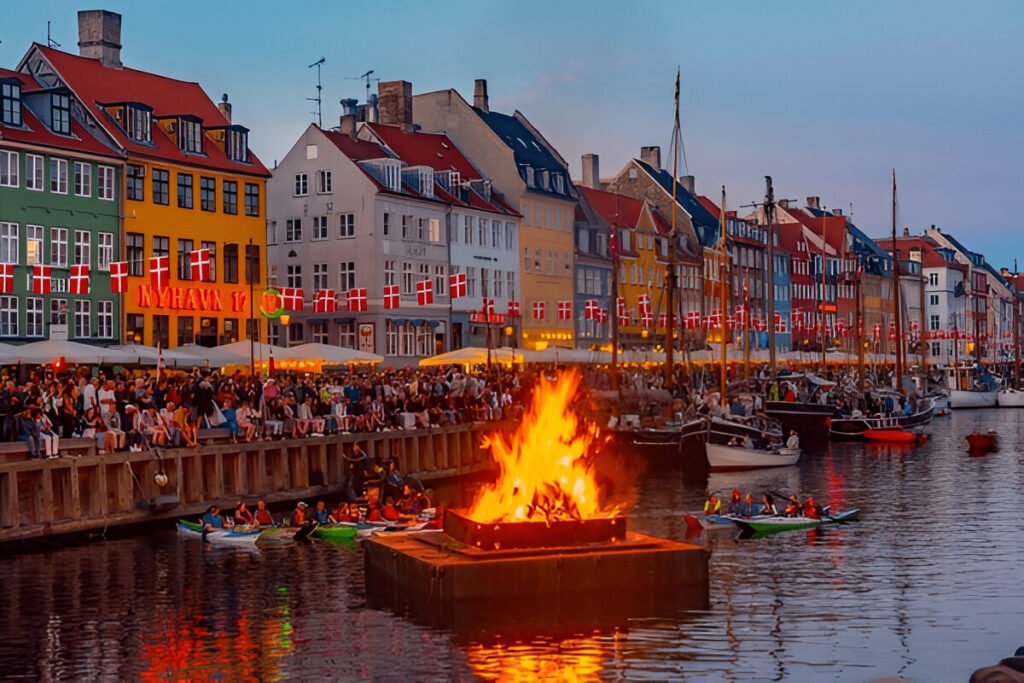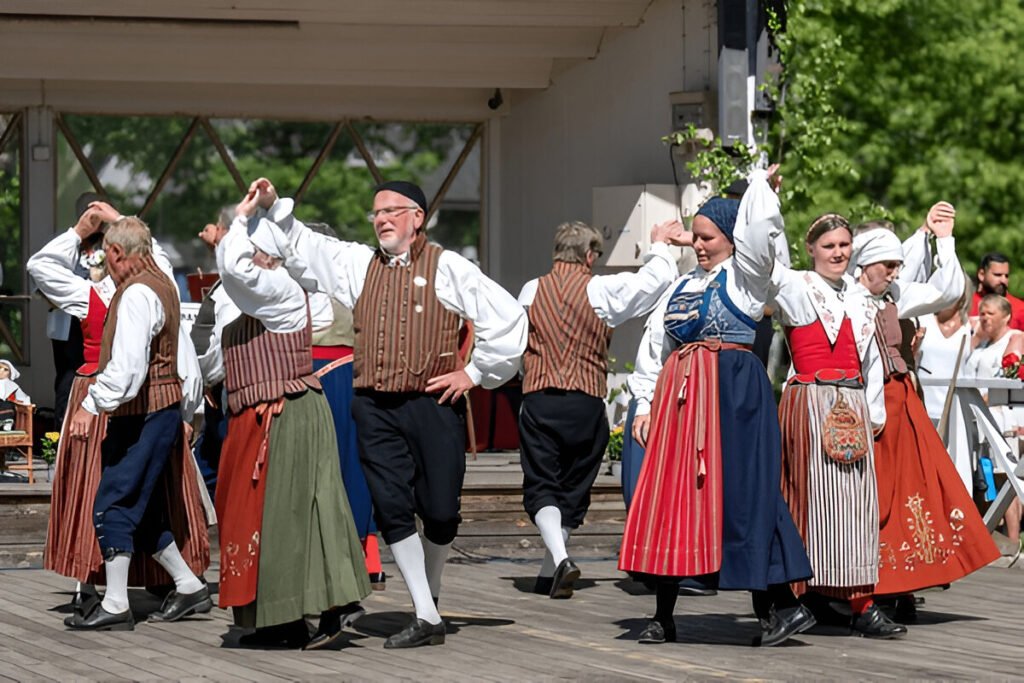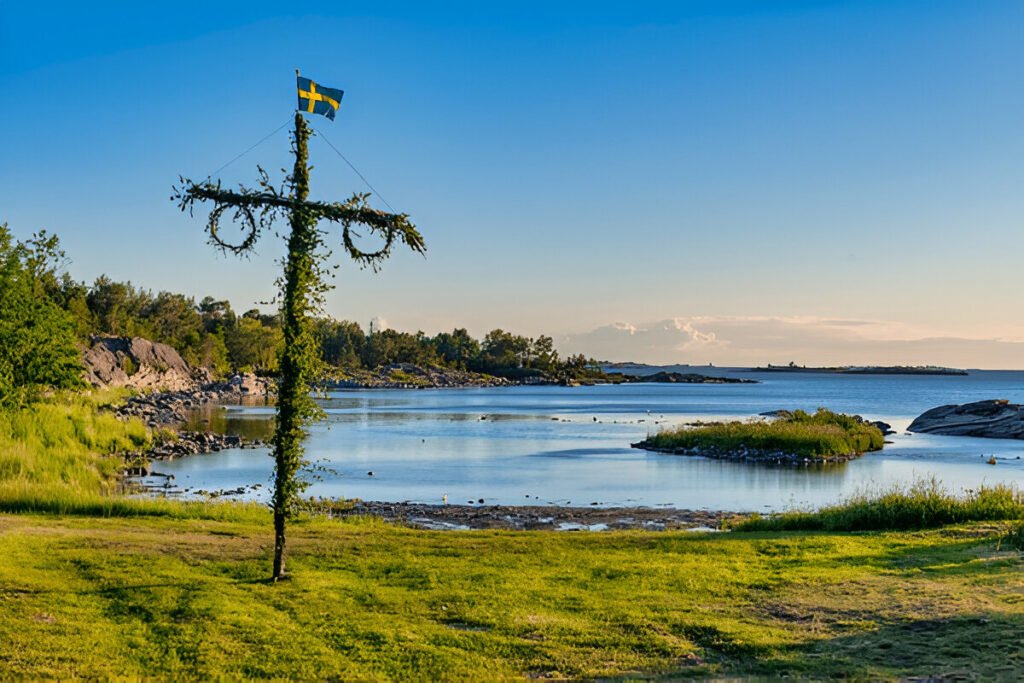Introduction
Midsummer in Scandinavia is one of the most vibrant, enchanting, and eagerly anticipated events of the year. It marks the summer solstice, when the sun stays above the horizon for the longest day of the year, creating an atmosphere of festivity, togetherness, and celebration. Whether in Sweden, Denmark, Norway, or Finland, Midsummer is deeply rooted in history and tradition. For locals, it is a time to gather with family and friends, enjoy the beautiful outdoors, and partake in a range of customs that have been passed down through generations. If you’re planning to experience this magical event, here’s your ultimate guide to Scandinavian Midsummer celebrations.
What is Midsummer?

Midsummer, or “Midsommar” in Swedish, is the celebration of the summer solstice and one of the most important holidays in Scandinavian countries. In the northernmost regions, the sun barely sets during this period, making it a time to celebrate the warmth and light of summer. The event typically takes place between June 20 and June 25, depending on the country. Midsummer celebrates not only the power of nature but also the joy of life, with a strong emphasis on socializing, dancing, and enjoying the outdoors.
The Origins of Midsummer
Midsummer has ancient roots that predate Christianity. The festival’s origins are linked to pre-Christian pagan beliefs, celebrating the sun, fertility, and the cycle of the seasons. It was considered a time to honor the sun’s life-giving powers and to ensure a good harvest in the coming months. The traditions evolved over time and were intertwined with Christian rituals, but the core themes of nature, fertility, and community remain central to the celebration today.
The Iconic Midsummer Pole (Midsommarstång)
One of the most recognizable symbols of Midsummer is the Midsummer pole, known as “Midsommarstång” in Sweden. This pole is typically erected in a central location in villages or towns, often adorned with flowers, greenery, and ribbons. The raising of the Midsummer pole is a community event, with everyone, young and old, participating in the preparations. Once the pole is in place, it becomes the focal point for the festivities, with people dancing around it in a joyful, celebratory manner.
The traditional dances around the Midsummer pole are often accompanied by Swedish folk music, creating an atmosphere of lighthearted fun and community spirit. The most popular dance is the “Små grodorna” (The Little Frogs), where participants mimic the movements of frogs while singing playful songs. It’s a whimsical and light-hearted tradition that perfectly embodies the joy and freedom of the occasion.
Midsummer Food and Drink

Food is an integral part of any celebration, and Midsummer is no exception. Scandinavians love to indulge in a variety of delicious dishes during Midsummer, with an emphasis on fresh, local ingredients. Here are some of the must-have foods for a true Midsummer feast:
- Pickled Herring (Sill): This iconic Swedish dish is often served in a variety of flavors, such as mustard, garlic, and dill. Pickled herring is typically paired with boiled potatoes and sour cream, making for a refreshing and tangy dish.
- New Potatoes (Nypotatis): Fresh, new potatoes are a staple at Midsummer feasts, often boiled and served with dill and butter. This simple, yet flavorful dish pairs perfectly with pickled herring and other seafood.
- Grilled Salmon (Grillad Lax): In many Scandinavian countries, salmon is a key part of the Midsummer menu. Grilled or smoked salmon is commonly served, often with a side of mustard sauce and new potatoes.
- Strawberries (Jordgubbar): Nothing says summer in Scandinavia quite like fresh strawberries. These are often served with whipped cream or in a traditional dessert known as “jordgubbskaka” (strawberry cake).
- Snaps (Schnapps): A traditional Swedish spirit, snaps is commonly consumed in small quantities throughout the Midsummer celebrations. It is usually paired with a toast and a song, with the most famous being “Helan Går,” a cheerful drinking song. Schnapps comes in various flavors, including dill, caraway, and other herbs.
Midsummer meals are often enjoyed outdoors, and picnics are a common way to gather with friends and family. It’s a time to relax, eat, drink, and celebrate under the long summer daylight.
Midsummer Traditions and Customs

- Flower Crowns and Decorations
A signature tradition of Midsummer in Scandinavia is the making of flower crowns. It is customary for people, particularly children and women, to pick wildflowers from the fields and forests and fashion them into beautiful crowns. These crowns are worn during the celebrations and are thought to bring good luck, as well as symbolize the connection between humans and nature. It is said that if a young woman places seven flowers under her pillow on Midsummer Eve, she will dream of her future husband.
- Bonfires
In many Scandinavian countries, bonfires are a significant part of Midsummer night celebrations. Lighting a bonfire is seen as a way to chase away evil spirits and ensure a good harvest. The bonfire symbolizes the power of the sun, and the warm glow of the fire creates a magical ambiance as people gather around to sing songs, tell stories, and enjoy the night.
Midsummer Eve and Midsummer Day
The main Midsummer celebration takes place on Midsummer Eve, which is the night of the solstice. It is considered the most magical night of the year, when the transition from day to night feels particularly special. People gather in the evening to celebrate with food, drinks, music, and dancing. The following day, Midsummer Day, is typically a time for more relaxed celebrations, with many people continuing the festivities in the countryside or by the water.
Where to Celebrate Midsummer in Scandinavia

Each of the Scandinavian countries offers a unique way to experience Midsummer celebrations. Here are some of the best destinations to visit for a memorable Midsummer experience:
- Sweden:
Sweden is perhaps the most famous country for its Midsummer celebrations. Stockholm and the countryside are home to lively Midsummer festivals, with many people traveling to rural areas for a more traditional experience. The archipelago is also a beautiful place to celebrate, with small islands offering picturesque settings for Midsummer festivities.
- Finland:
In Finland, Midsummer is a deeply cherished holiday, often celebrated in lakeside cottages surrounded by nature. The Finnish version of Midsummer involves swimming in the midnight sun, sauna sessions, and festive gatherings. Helsinki offers a lively atmosphere with various public celebrations.
- Norway:
In Norway, Midsummer is known as “Jonsok” or “St. John’s Eve,” and it is marked by bonfires and gatherings along the coast and in rural areas. Cities like Bergen and Oslo host vibrant festivals, but the rural fjords offer a tranquil setting for a more intimate Midsummer celebration.
- Denmark:
In Denmark, Midsummer is celebrated with bonfires, music, and dancing. Copenhagen’s Midsummer festival is famous for its lively atmosphere, but smaller villages around the country offer a more traditional and charming experience.
Tips for Enjoying Midsummer in Scandinavia

- Plan Ahead: Midsummer is a popular time for travel in Scandinavia, so it’s important to book accommodations and make travel arrangements well in advance.
- Pack for the Weather: Even though Midsummer is in the summer, the weather can still be unpredictable. Bring layers, as temperatures can fluctuate, especially in the evenings when the sun sets.
- Join in the Fun: Don’t be shy—join in the traditional dances, sing the songs, and enjoy the communal spirit of the festival. Midsummer is about celebrating with others, so embrace the joy of the occasion.
- Respect Local Customs: If you are attending a private Midsummer gathering, be mindful of local customs and etiquette. It’s always a good idea to ask about any specific traditions that might be important to the hosts.
Conclusion
Scandinavian Midsummer celebrations are a magical way to experience the heart and soul of the Nordic countries. Whether you’re joining a lively festival in a city or enjoying a peaceful gathering in the countryside, the festive atmosphere, beautiful traditions, and connection to nature make Midsummer an unforgettable experience. From dancing around the Midsummer pole to feasting on delicious food and enjoying the long summer days, this celebration is a true reflection of Scandinavian culture and a must-see event for any traveler seeking to explore the best of the North.











